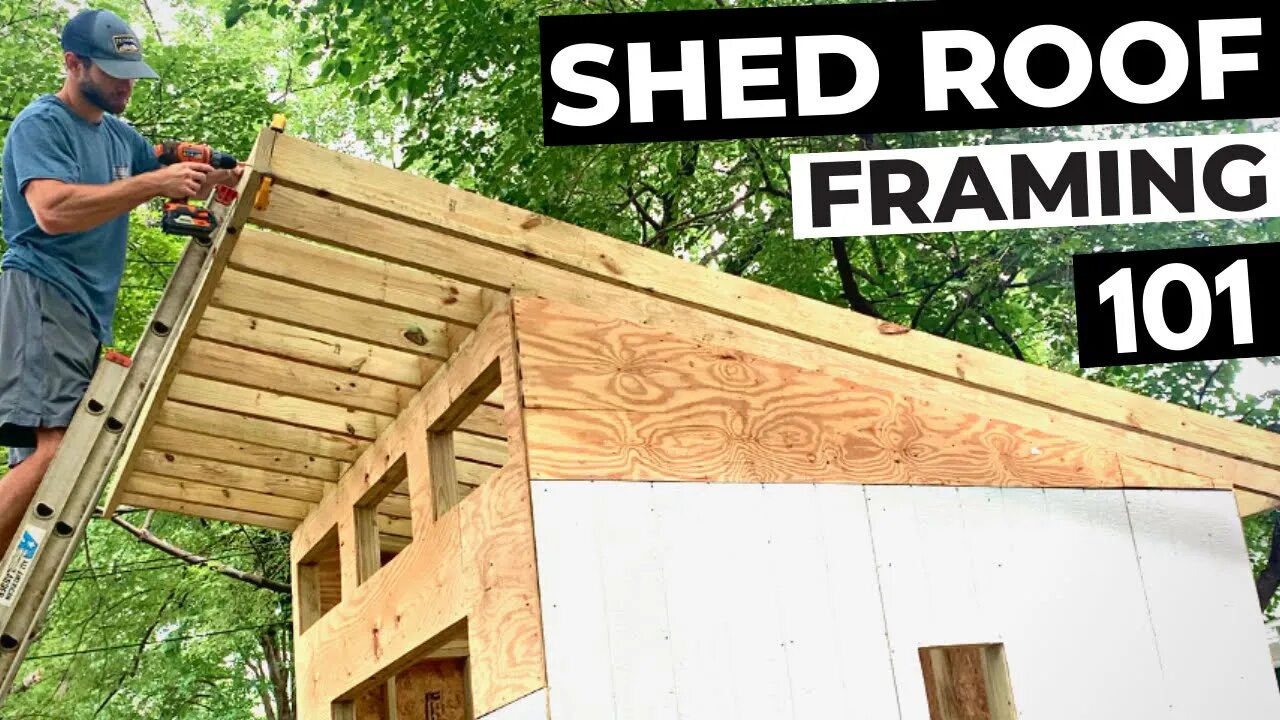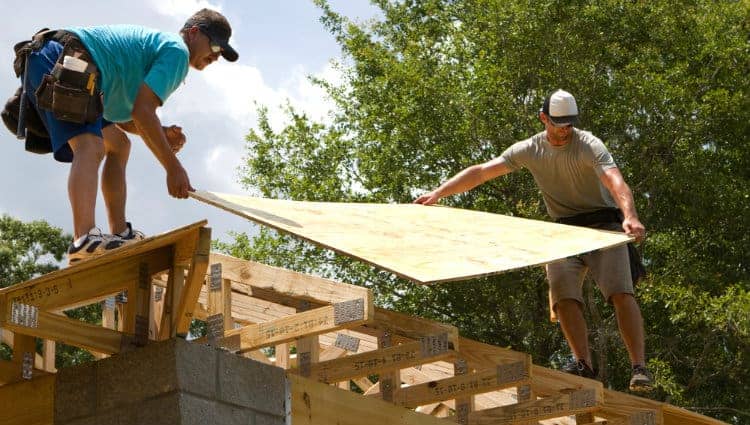If you’re wondering “which plywood is best for a shed roof?” you’ve come to the right place! Building a shed is an exciting project, and choosing the right plywood for the roof is crucial for its longevity and durability. But don’t worry, we’ll break down everything you need to know in simple terms!
When it comes to selecting plywood for your shed roof, there are a few key factors to consider. The type and thickness of the plywood, as well as its ability to withstand moisture and weather conditions, are essential. Let’s dive into the details and find the perfect plywood for your shed roof!
Are you ready to explore the options and make an informed decision? Let’s get started on choosing the ideal plywood for your shed roof in this comprehensive guide! Whether you’re a beginner or a seasoned builder, we’ve got you covered with all the information you need.

Which Plywood is Best for a Shed Roof?
When it comes to building a shed, one of the most important considerations is the type of plywood to use for the roof. The roof serves as the first line of defense against the elements, so it’s crucial to choose the right plywood that will provide durability, protection, and longevity. In this article, we will explore the different types of plywood and their suitability for shed roofs, helping you make an informed decision for your project.
The Importance of Choosing the Right Plywood for a Shed Roof
The choice of plywood for a shed roof plays a significant role in the overall strength and performance of the structure. A well-chosen plywood will provide structural integrity, prevent leaks, and withstand various weather conditions. On the other hand, using the wrong plywood can lead to premature roof failure, costly repairs, and potential damage to the contents of the shed. Therefore, it’s important to consider the following factors when deciding which plywood to use for your shed roof:
Types of Plywood for Shed Roofs
1. OSB (Oriented Strand Board): OSB is a popular choice for shed roofs due to its affordability and durability. Made from thin wood strands compressed and bonded with resin, OSB offers good structural strength and resistance to bending. However, it is more susceptible to moisture and should be adequately protected with waterproofing materials.
2. CDX Plywood: CDX plywood is a common choice for shed roofs as it strikes a good balance between cost and performance. It features a rough surface and is constructed with layers of thin wood veneers glued together. CDX plywood is resistant to moisture and provides decent structural strength for shed roofs.
3. Exterior Grade Plywood: Exterior grade plywood, also known as Sheathing plywood, is engineered with water-resistant glue and is specifically designed for outdoor applications. It offers superior moisture resistance, making it an ideal choice for shed roofs that may be exposed to rain, snow, or high humidity levels. It is more expensive than OSB or CDX plywood but provides better protection.
Factors to Consider When Choosing Plywood for a Shed Roof
1. Climate: Consider the climate in your area. If you live in an area with heavy rainfall or extreme temperature variations, opt for a plywood type that offers excellent moisture resistance and thermal stability.
2. Budget: Evaluate your budget and choose a plywood type that fits within your financial constraints. Remember to consider the long-term cost implications, as cheaper plywood may require more frequent replacements.
3. Shed’s Purpose: Consider how you will be using the shed. If it will be used for storing valuable items or as a workspace, investing in higher-quality plywood is advisable to ensure better protection.
Tips for Installing Plywood on a Shed Roof
1. Ensure a clean and level surface before installing the plywood. Remove any debris, nails, or old roofing materials.
2. Use the appropriate fasteners for the chosen plywood type, such as roofing nails or screws. Follow the manufacturer’s recommendations for spacing and installation methods.
3. Apply a waterproofing membrane or underlayment to enhance the shed roof’s protection against moisture and leaks.
Best Practices for Shed Roof Plywood Installation
Proper installation of plywood on a shed roof is crucial for its longevity and performance. Follow these best practices to ensure a successful installation:
1. Choose Quality Plywood
Invest in high-quality plywood that is specifically designed for outdoor use. Exterior grade plywood is recommended as it provides superior moisture resistance and overall durability.
2. Use the Correct Thickness
Select the appropriate thickness of plywood based on the shed’s size, design, and local building codes. Thicker plywood will offer better strength and stability.
3. Prepare the Roof Framing
Inspect and reinforce the roof framing if necessary to ensure it can support the weight of the plywood and any additional loads, such as snow accumulation.
4. Ensure Proper Ventilation
Incorporate proper ventilation measures, such as soffit vents and a ridge vent, to prevent excessive heat buildup and moisture accumulation, which can cause damage to the plywood and the shed’s interior.
5. Apply a Protective Coating
Consider applying a protective coating or sealant to the plywood surface to enhance its resistance to moisture and prolong its lifespan. Consult with a professional to determine the best coating options for your specific needs.
6. Regular Maintenance
Regularly inspect your shed roof for any signs of damage, such as cracks, leaks, or rot. Promptly address any issues to prevent further deterioration and to extend the lifespan of the plywood.
In conclusion, choosing the right plywood for your shed roof is crucial for the long-term performance and durability of the structure. Evaluate your climate, budget, and shed’s purpose to determine the most suitable plywood type for your needs. Follow best practices for installation and maintenance to ensure a reliable and sturdy shed roof that will protect your belongings for years to come.
Key Takeaways: Which Plywood for Shed Roof?
- Choose plywood with a high grade like ACX or BCX for shed roofs.
- Ensure the plywood is suitable for outdoor use and treated to resist moisture.
- Opt for plywood with at least 3/8 inch thickness for shed roofs.
- Consider using tongue and groove plywood for a tighter fit and added stability.
- Consult with a professional or follow manufacturer recommendations for the specific requirements of your shed roof.
Frequently Asked Questions
Welcome to our FAQ section on choosing the right plywood for your shed roof. Here, we’ll address some common questions to help you make an informed decision.
1. What are the different types of plywood suitable for a shed roof?
There are a few types of plywood commonly used for shed roofs. Some popular options include OSB (Oriented Strand Board), CDX (Construction-grade Plywood), and BCX (Exterior Plywood). These types of plywood are designed to withstand weather conditions and provide structural support for your shed roof.
OSB is a budget-friendly choice that offers good moisture resistance and strength. CDX is a bit more expensive but provides better resistance to moisture and is often used for exterior applications. BCX is the highest grade, offering the best durability and resistance to moisture. Consider your budget and the specific needs of your shed roof when choosing the right plywood.
2. How thick should the plywood be for a shed roof?
The thickness of the plywood for your shed roof will depend on various factors, including the span between rafters and the load the roof will bear. As a general guideline, 1/2-inch or 5/8-inch plywood is often used for standard roofs with rafters spaced at 16 inches apart. If you’re using larger spans or expect heavier loads, you may need thicker plywood, such as 3/4-inch.
It’s always wise to consult local building codes or a structural engineer to determine the appropriate thickness for your specific shed roof. They can factor in variables like snow load or other environmental considerations that may affect the structural integrity of your roof.
3. Can I use regular plywood instead of exterior-grade plywood for my shed roof?
Using regular plywood instead of exterior-grade plywood for your shed roof is not recommended. Regular plywood does not have the same level of weather resistance and durability as exterior-grade plywood. Over time, regular plywood may warp, decay, or become damaged due to exposure to moisture, heat, and other outdoor elements.
To ensure the longevity and structural integrity of your shed roof, it’s best to invest in exterior-grade plywood. Exterior-grade plywood is specially designed to handle outdoor conditions, providing better protection against moisture, rot, and other potential damage. It may cost a bit more initially, but it will save you from costly repairs or replacements in the long run.
4. Can I use plywood with a smooth finish for my shed roof?
While plywood with a smooth finish may seem visually appealing, it’s not typically recommended for shed roofs. The smooth surface lacks texture and grip, which can be problematic when it comes to shedding water and preventing slips or accidents. Additionally, smooth plywood may be more prone to developing cracks or warping over time.
For shed roofs, it’s advisable to choose plywood with a rough or textured surface. This helps improve traction and allows water to flow properly, reducing the risk of pooling or leakage. The textured surface also enhances the bonding capability of adhesives used during installation, ensuring a strong and secure roof structure.
5. Should I apply additional treatments or coatings to the plywood for my shed roof?
While exterior-grade plywood already offers decent resistance to moisture and weathering, applying additional treatments or coatings can further enhance its durability. One option is to use a waterproofing sealant or primer specifically designed for plywood. This helps create a protective barrier against moisture intrusion.
Another option is to apply a weather-resistant paint or stain to the plywood. This can provide an extra layer of protection while also adding aesthetic value to your shed roof. Just make sure to choose a paint or stain that is intended for exterior use and suitable for plywood. Follow the manufacturer’s instructions for proper application and maintenance.

How to Build a Shed – Sheathing The Roof – Video 10 of 15
Summary
Choosing the right plywood for your shed roof is important to ensure its durability and strength. Here are the key points to remember:
First, use exterior-grade plywood, as it is designed to withstand outdoor conditions. Secondly, consider the thickness of the plywood based on the weight it needs to support. Thicker plywood can handle heavier loads. Additionally, opt for plywood that has been treated to resist moisture and decay. This will prevent damage and prolong the life of your shed roof. Finally, make sure to properly install and maintain the plywood to ensure its effectiveness and longevity.
By following these guidelines, you can select the right plywood for your shed roof and enjoy a sturdy and reliable structure.
